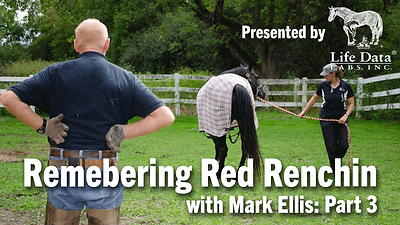According to a recent study, it seems there have been two separate accounts of horse domestication in history — with two different species of horses.
National Geographic covers the “Steppe Hypothesis,” which holds that around 3,000 B.C., a group of horse-riding herdsmen known as the Yamnaya migrated from the Black and Caspian Seas to as far west as Europe and east into Central and South Asia. In traveling across these lands, it was assumed the people brought their knowledge of horse breeding with them, as well as early Indo-European languages. Recent DNA studies indicate that this hypothesis is wrong.
In order to understand the beginnings of horse husbandry, researchers had to look back even further in time between 3,500 and 3,000 B.C. at the Botai people who lived on grasslands of what is now Kazakhstan. Archeologists uncovered a culture centered around the horse. Pottery shards containing traces of horse milk were highly prevalent, lending researchers the idea that the Botai were the first to domesticate horses.
The Botai may be the first to domesticate their horses, but these were not, by far, the first horses in history. The preserved body of a Siberian foal was recently found in the Batang Depression and was dated to be around 30,000 to 40,000 years old.
Some people believe the Botai figured out domestication all on their own from watching the horses. Others believe another group of horse herders taught the Botai, possibly even the Yamnaya. Researchers decided to take both theories and pit them against each other.
The scientists examined archeological evidence and analysis of the genomes of 74 ancient human beings. The DNA included samples from the ancient Eurasian steppes to the medieval times to even the Mesolithic era.
And the results showed that the Botai and Yamnaya people were two different types. The Botai were more closely related to hunter-gatherers. Researchers suspect then that the Botai did not learn horse husbandry from the Yamnaya but instead taught themselves when they transitioned from nomadic to pastoral life with horse-centered farming villages.
This study also poked a hole in another long-held theory. The DNA of the Botai horses does not match those of today; thus, one can’t draw a connection between the domestication of ancient horses and those today. That means there have been two monumental instances of taming horses in history.
“We actually have two independent events of horse domestication,” says Peter de Barros Damgaard, a molecular biologist from the Natural History Museum of Denmark who led the project. “While it is true that the Botai were the first to domesticate the horses, it wasn’t their horses that became widespread.”
The horses that ended up evolving into those of today remain a mystery. Researchers are stumped on the supposed isolation of the Botai and their horses, since no evidence of cross-culture nor breed contamination is present. Further, scientists can’t pinpoint the Botai’s time of transition into being more horse-centered in daily life. This new discovery will negate a lot of older findings on horse breeding and Eurasian population shifts, leading researchers to do more new studies.
The Botai horses eventually gave rise to the Przewalski horses. Studies have turned what had become common belief into fiction as they discovered the Przewalski horses are feral, not wild. And what’s even more interesting is the fact that even these wild-living horses suffer from laminitis. More research has turned upside-down the idea that laminitis is caused by mankind.
MORE COVERAGE
Find out more about ancient types of horses here:
- Physiology, Foot Morphology And Health In The True Wild Horse
- DNA Tests Reveal Przewalski's horses Are Feral
- See the preserved hooves of the Siberian foal.







Post a comment
Report Abusive Comment